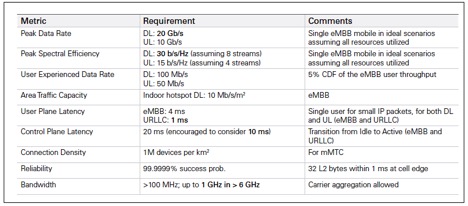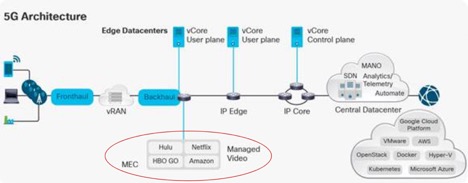In part 1 of the “Three Services from 5G” blog series, I covered the three key features of 5G that are outlined in the 3GPP Release 15 specification:
· Enhanced Mobile Broadband (eMBB), which involves capacity enhancements
· Ultra-Reliable Low Latency Communications (URLLC), which has exacting requirements on latency and reliability
· Massive Machine Type Communications (mMTC), which provides connections to large numbers of devices that intermittently transmit small amounts of traffic
In part 1, I also discussed how eMBB can improve video conferencing and advance new services like augmented reality and virtual reality. All connected devices will use eMBB, nnot just smartphones, so web scale companies will be dealing with video everywhere in their applications.
Now I’m going to delve into what URLLC means for web scale companies like Google and Amazon.
Why does URLLC Matter?
Per 3GPP Release 15, URLLC is a set of features that provide low latency and ultra-high reliability for faster cloud access and mission-critical and time-sensitive applications.
This table has an overview of the 2020 3GPP minimum requirements.

What does that mean for us? That low-latency and reliability of URLLC makes applications such as remote healthcare, semiconductor robotics, and autonomous transportation—not only our self-driving cars, but think self-driving trucks and delivery services—systems feasible. It’s also why people are looking at 5G for mission-critical applications like remote surgery where the response time to control signaling must be the shortest it can be and dropped packets are virtually non-existent.
URLLC and the Network
To reduce network latency, web scale companies can take advantage of Multi-Access Edge Computing (MEC) functionally in the 5G architecture.
In the past, user traffic was sent to a few, often distant central datacenters (CDC). But with MEC, user traffic is no longer tunneled to a provider’s data center; instead that tunnel is terminated at local smaller datacenters nearer the cell radio. This approach can eliminate network delays of approximately 100 ms from end-to-end latency because the traffic isn’t traversing back to the CDC.
For web scale companies, ultra-low radio and network latencies with ultra-reliable traffic opens up new opportunities. They can consider dedicated radio bearers to cloud services using MECs for local traffic offload. In this case, you could create a dedicated bearer (analogous to the dedicated bearer for Voice over LTE (VoLTE)) to any cloud-based service, located near or often co-located in the MEC. The service could be caching of on-demand video to real-time financials to any cloud-based service you could create. With this solution, you’d have control over the end to end network characteristics (bandwidth, latency, jitter, etc.) you will need to provide the customer experience they require for your new application.
Initially this end to end path or “slice” through the network would be statically assigned to the application. In the near future, applications will soon be able to request their path in real-time based on their requirements.
Thanks to URLLC, web scale companies now can set up the network services they need to match the application services they want to offer. From Netflix on your phones to a remote surgical suite in your hospitals—no more over the top (OTT) best effort.
Learn more about 5G in our product deep dive
Read more about the 5G solutionshttps://www.cisco.com/go/5G
Watch our 5G demo


CONNECT WITH US